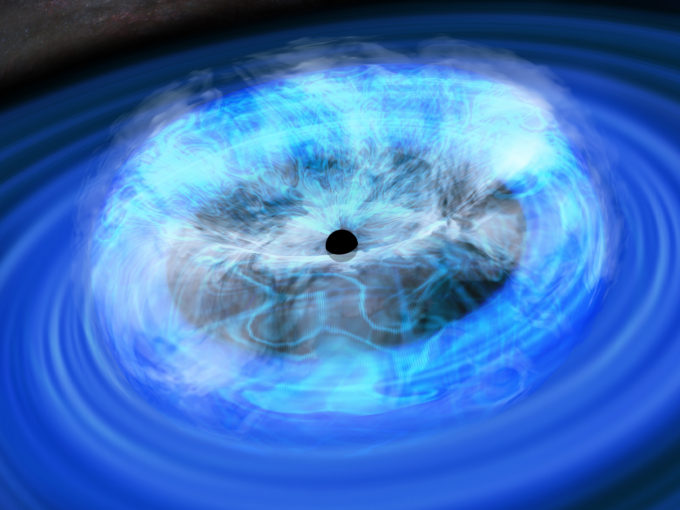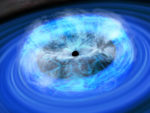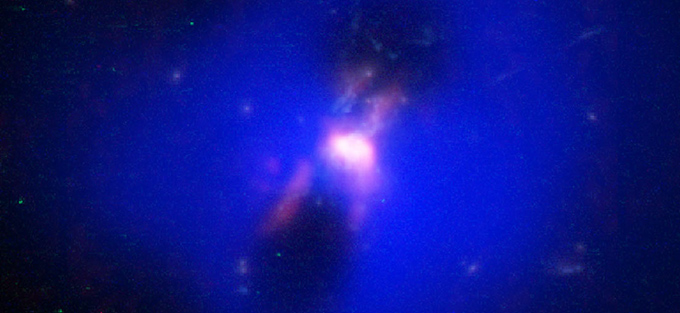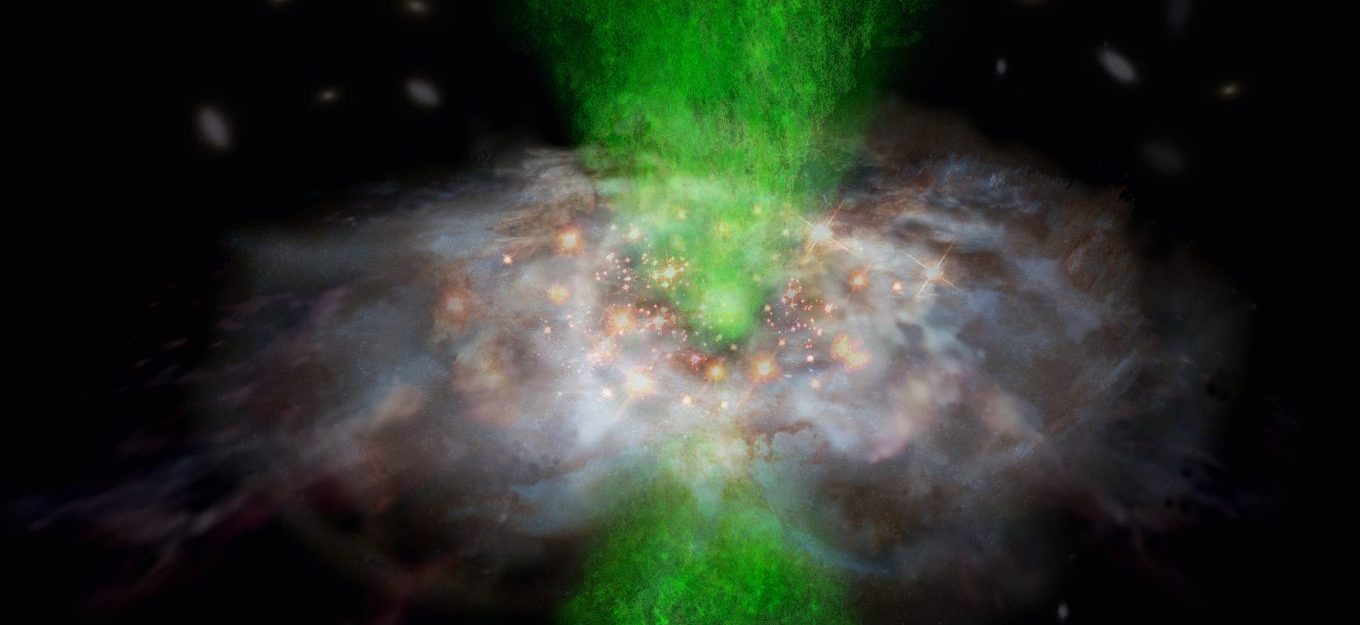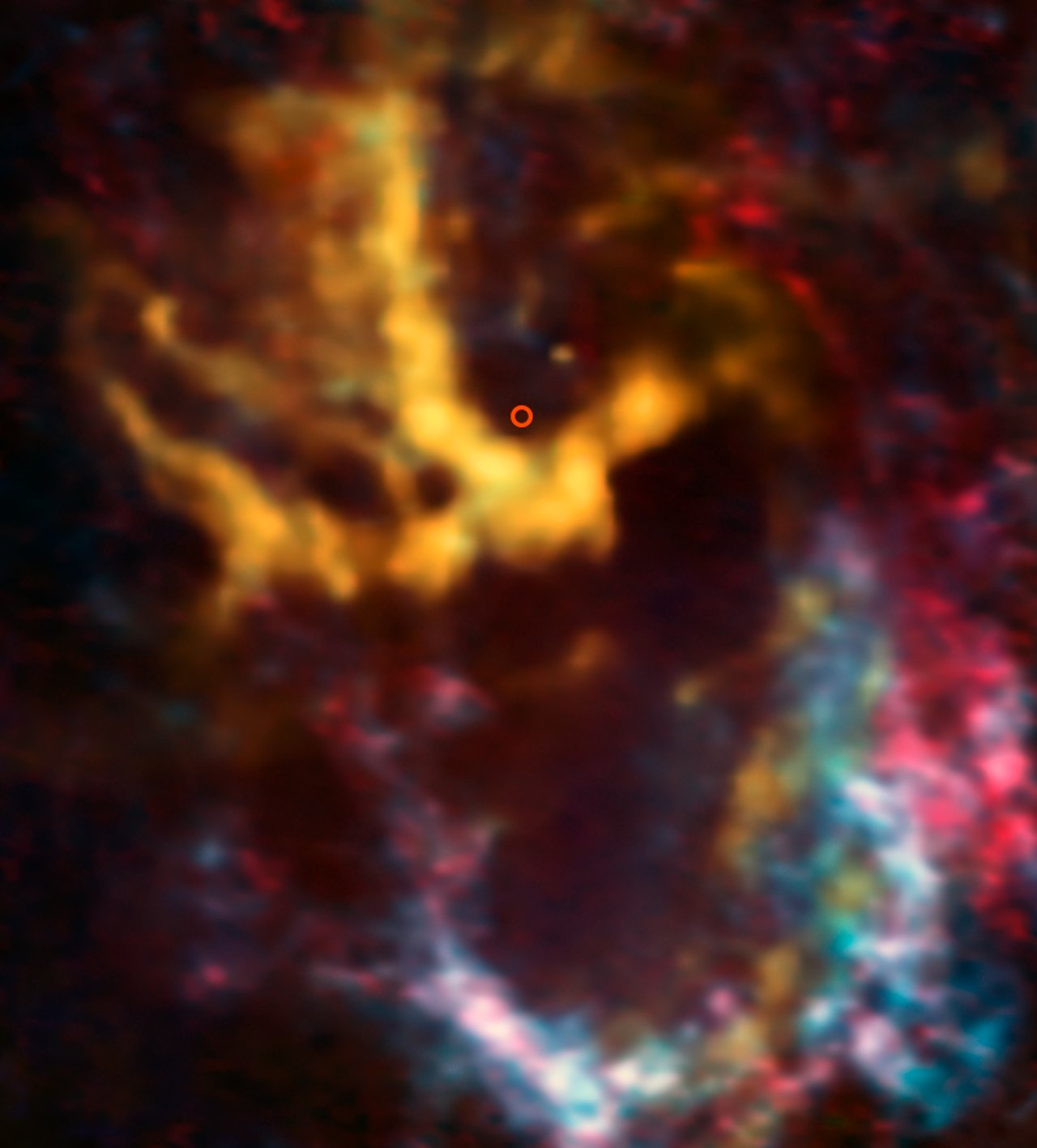Mystery of coronae around supermassive black holes deepens
Researchers from RIKEN have used observations from the Atacama Large Millimeter/submillimeter Array (ALMA) to measure the strength of magnetic fields near two supermassive black holes at the center of an important group of active galaxies. Surprisingly, the strengths of the magnetic fields do not appear sufficient to power the coronae, clouds of superheated plasma, that are observed around the black holes at the centers of those galaxies.
It has long been known that the supermassive black holes that lie at the centers of galaxies, sometimes outshining their host galaxies, havecoronaeof superheated plasma around them, like the Sun. For black holes, these coronaecan be heated to a phenomenal temperature of one billion degrees Celsius. It was long assumed that, like that of the Sun, the coronaewere heated by magnetic field energies. However, these magnetic fields had never been measured, leaving uncertainty regarding the exact mechanism.
In a 2014 paper, the research group predicted that electrons in the plasma surrounding the black holes would emit a special kind of light, known as synchrotron radiation, as they exist together with the magnetic forces in the coronae. Specifically, this radiation would be in the radio band, meaning light with a very long wavelength and low frequency. And the group set out to measure the fields.
They decided to look at data from two “nearby”—in astronomical terms—active galactic nuclei—IC 4329A, which is about 200 million light years away, and NGC 985, which is approximately 580 million light years away. They began by taking measurements from the ALMA observatory in Chile, and then compared them to observations from two other radio telescopes: the VLA observatory in the United States, and the ATCA observatory in Australia, which measure slightly different bands; and found indeed that there was an excess of radio emission originating from synchrotron radiation, in addition to emissions from the jets case out by the black holes.
Through the observations, the team deduced that the coronaehad a size of about 40 Schwartzchild radii (the radius of a black hole from which not even light can escape), and a strength of about 10 gauss, a figure that is a bit more than the magnetic field at the surface of the earth but quite a bit less than that given out by a typical refrigerator magnet.
“The surprise,” says Yoshiyuki Inoue, the first author of the paper, “is that although we confirmed the emission of radio synchrotron radiation from the coronaein both objects, it turns out that the field of the magnetic field we measured is much too weak to be able to drive the intense heating of the coronaearound these black holes.” He also notes that the same phenomenon was observed in both galaxies, implying that it could be a general phenomenon.
Looking to the future, Inoue says that the group plans to look for signs of powerful gamma rays that should accompany the radio emissions, to further understand what is happening in the environment near supermassive black holes.
Additional Information
This research is accepted for publication under the title "Detection of Coronal Magnetic Activity in Nearby Active Supermassive Black Holes" by Y. Inoue et al. in the Astrophysical Journal.
The Atacama Large Millimeter/submillimeter Array (ALMA), an international astronomy facility, is a partnership of the European Southern Observatory (ESO), the U.S. National Science Foundation (NSF) and the National Institutes of Natural Sciences (NINS) of Japan in cooperation with the Republic of Chile. ALMA is funded by ESO on behalf of its Member States, by NSF in cooperation with the National Research Council of Canada (NRC) and the Ministry of Science and Technology (MOST) in Taiwan and by NINS in cooperation with the Academia Sinica (AS) in Taiwan and the Korea Astronomy and Space Science Institute (KASI).
ALMA construction and operations are led by ESO on behalf of its Member States; by the National Radio Astronomy Observatory (NRAO), managed by Associated Universities, Inc. (AUI), on behalf of North America; and by the National Astronomical Observatory of Japan (NAOJ) on behalf of East Asia. The Joint ALMA Observatory (JAO) provides the unified leadership and management of the construction, commissioning and operation of ALMA.
Image
Contacts
-
Nicolás Lira
Education and Public Outreach OfficerJoint ALMA Observatory, Santiago - ChilePhone: +56 2 2467 6519Cel: +56 9 9445 7726Email: [email protected] -
Masaaki Hiramatsu
Education and Public Outreach Officer, NAOJ Chile -
Calum Turner
ESO Assistant Public Information Officer -
Charles E. Blue
Public Information OfficerNational Radio Astronomy Observatory Charlottesville, Virginia - USAPhone: +1 434 296 0314Cel: +1 202 236 6324Email: [email protected]

